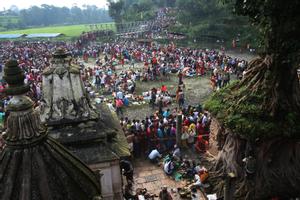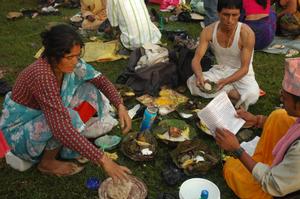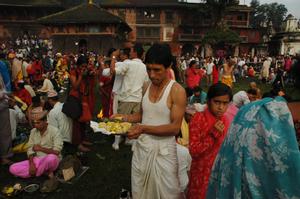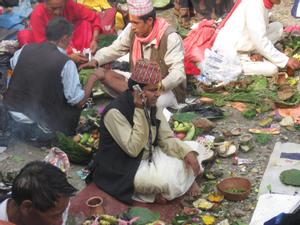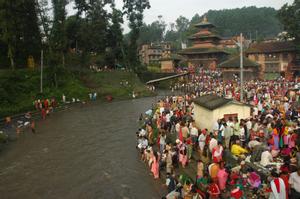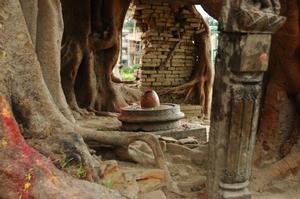Gokarṇa aũsī
Gokarṇa aũsī is an annually recurring festival honoring the deceased father and male ancestors (pitaraḥ). It marks the beginning of the ritual cycle that spans the entire year, except for a four-month interruption during the rainy season. Gokarṇa aũsī takes place on the new moon day (aũsī means 'new moon') of the month of Bhādra (August-September). The village of Gokarṇa is located in the Kathmandu Valley, about eight kilometers east of the capital on the south-flowing Bāgmatī River. There is one of the most revered Śivaliṅgas of the valley, which is worshipped as Gokarṇeśvara Mahādeva.
If the father passed away more than a year ago - within the first year of mourning, some special rituals must be performed for the deceased - the bereaved person visits the Gokarṇa site on that day, along with thousands of others, to bathe in the river and make offerings to the ancestors (śrāddha). Especially residents of the Kathmandu Valley, Hindus and Buddhists alike, participate in this ancestor worship. For the deceased, mainly piṇḍas, sacrificial balls of dough kneaded under the guidance of a Brahmin, are first offered and then thrown into the river. These piṇḍas are said to ensure the well-being of the deceased. After completing the ritual, pilgrims worship Śiva in the temple above the river.
However, Gokarṇa aũsī is also a day on which fathers who are still alive are celebrated and presented with gifts by their children, a kind of Father's Day whicht married daughters also take advantage of to visit their parental home.
Maria Waldsich
